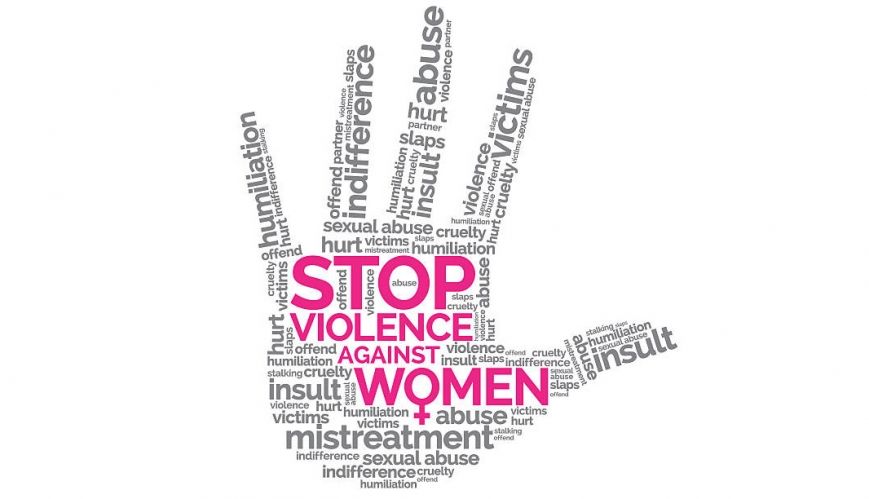Family violence in the spotlight

Family violence in the spotlight
25 November 2022
.
Today is the annual United Nations International Day for the Elimination of Violence against Women. It is also the annual launch of 16 days of activism against this violence. The campaign concludes on 10 December and aims to educate people about the prevalence of violence against women, mobilise political change, provide resources that address global issues and celebrate the achievements that have been made.
The Salvation Army’s National Family Violence Stream offers specialist family violence services to families and individuals experiencing and recovering from family violence, modern slavery and forced marriage, and those who have perpetrated family violence.
Earlier this year, The Salvation Army launched its Social Justice Stocktake report – a map of social justice priorities across Australia. Not surprisingly, family and domestic violence was high on the list of issues that concern Australians around the country.
“We sourced 100 responses from every single electorate,” explains Chelsea Boyle, Salvos Policy and Advocacy Advisor. “We asked about the social justice issues people thought were a challenge, and family violence appeared in the top five issues in every single state and territory.”
More than 15,000 Australians responded to the report questionnaire in the lead-up to the report’s release in February.
 Chelsea Boyle, Salvos Policy and Advocacy Advisor.
Chelsea Boyle, Salvos Policy and Advocacy Advisor.
One woman, on average, is murdered by her partner each week. Research also reveals the COVID pandemic coincided with the onset of physical or sexual violence or coercive control for many women. While the issue came to national attention last year when an estimated 110,000 people across Australia participated in the Women’s ‘March4Justice’ events, some decision-makers were reluctant to respond. Many felt it was a failure to listen.
Forms of family violence
“Last year, there was a change in the national conversation around violence against women,” Chelsea says. “I think there’s a better understanding of it; it’s not just physical, it’s emotional, it’s financial, it’s coercive control.”
Family violence can take many forms, including sexual harassment, verbal violence, psychological and emotional abuse, financial abuse, spiritual abuse, stalking, and technology-related abuse. Family violence, at its core, is an attempt by one person to control another.
“General society doesn’t know enough just yet,” Chelsea says. “Victims are still being told, ‘You weren’t hit’ or ‘There are no bruises’. Our new model of care offers consistency in terms of how we respond to family violence.”
The Salvos assist over 9000 women and children experiencing family violence each year and will soon launch the National Family Violence Model of Care developed by its Family Violence Stream. Where the Social Justice Stocktake sees the scope of the problem, the new model of care listens to victims and survivors.
“We wanted to be able to move forward in a way that was informed by those who use our services, the actual victim/survivors of family violence,” explains Alexandra Miller, Senior National Specialist for the Family Violence Stream.
Model of care
Beginning in 2019, the model of care was developed in accordance with an evidence-based approach and the voices of lived-experience advocates. Its purpose is to drive best practice responses across the Salvos according to its commitments to inclusion and safety.
.jpg&width=300&height=200) The Social Justice Stocktake report maps social justice priorities across the country.
The Social Justice Stocktake report maps social justice priorities across the country.
“The key principle is safety first,” Alexandra explains. “There’s no point giving someone accommodation if they’re still not safe. The strength of the model of care is that it’s rooted in the evidence around best practice and core principles of safety, with an intersectional feminist underpinning. It recognises the diversity of our participants, making sure our language is more inclusive, with an LGBTIQA+ inclusive practice framework.”
With the impending launch of the National Family Violence Model of Care, training and guidelines are already rolling out through Salvos services, though large-scale reform is still needed in many areas.
“We need a national definition of family violence,” explains Chelsea. “We want a national strategy on housing, bringing in all states and territories. Cost of living is a factor too, as well as men’s behaviour change programs. Gender inequality is the key driver of family violence.”
The Salvation Army is committed to working for justice wherever there is hardship and advocates for a range of actions on gender equity. The problem of family violence has never been more visible nationally, but by listening to victims and survivors, the solutions can be too.
To access the Social Justice Stocktake, go to salvationarmy.org.au/socialjusticestocktake/
Comments
No comments yet - be the first.